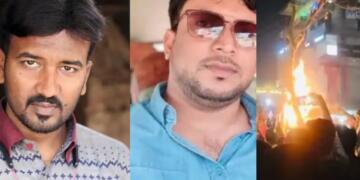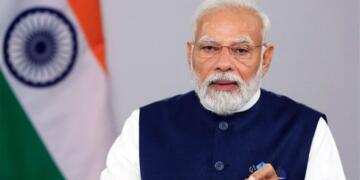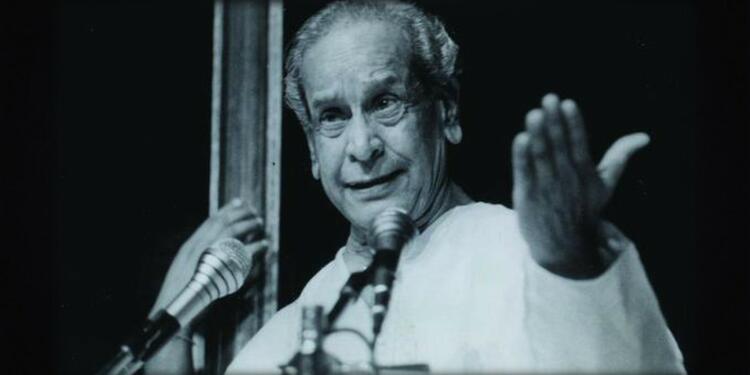Mile Sur Mera Tumhara…
Jo Bhare Hari Ko Sada…
Baaje Re Muraliya Baje…
The songs and bhajans that got infused with the culture and traditions of India, were sung by none other than the flagbearer of Hindustani classical music, Pandit Bhimsen Joshi. Pt Joshi had a voice that captured both anguish and ecstasy. Beginning from a humble village of Karnataka, Pt Joshi went on to become the most heard and praised voice of Hindustani Classical. From bhajans to songs, to his style Khayal, Pt Joshi left a void when the legendary voice fell silent in 2011.
Beginning from a humble background
Pandit Bhimsen Joshi was born on 4th February 1922, in Gadag region of Karnataka and was the eldest among 16 siblings. Joshi’s journey from a home in Karnataka to the biggest vocalist of the entire South-Asia was a daunting task. The best thing about the accolades that Pandit Bhimsen Joshi received was, he despite being born into a culture of music did not inherit it, rather built it himself with great labour.
Joshi was born into a family that had a culture of music as well as scholars. His grandfather, Bhimacharya was a well-known kirtankar. Bhimsen’s father Gururaj was a teacher and his uncle Govindacharya was a noted writer, publisher and dramatist.
Carrying on the traditions of the family, Bhimsen was very sharp in his studies and carried unprecedented love for music in his heart. However, no one knew that the journey ahead was going to be so tumultuous.
The voyage begins
It is said that Bhimsen, while returning from school, used to stop at a shop that sold Gramophone records every day. While the shopkeeper played the Gramophone to attract customers, Bhimsen used to silently listen to the songs. Bhimsen couldn’t contain his love for music and he left his home at just 11 years of age to pursue his love for music.
His quest for learning music indeed made him do a voyage. He travelled to different cities like Baijpur, Kolkata and Jalandar, learning all the music he could. He finally found his solace in his hometown, after he enrolled as a disciple of Sawai Gandharv. In memory of his guru, he began the Sawai Gandharv music festival in Pune in the year 1953.
However, his voyage gifted him a lot other things than struggle. Born in Karnataka, he was already gifted with a melting pot of Carnatic Music and Hindustani classical music. Later, the man born in south India also explored north and embraced the Kirana Gharana vocalism.
Pandit Bhimsen Joshi- The Gandharv
As he embraced the Kirana Gharana vocalism, he added a lot to the Gharana, probably the Pandit Bhimsen Joshi touch. The Gharana vocalists earlier did not use much taans (a technique used in the vocal performance), until Pt Joshi arrived. He formed patterns of taans and popularised the use of taans. He is also credited for increasing the pace of singing even in the vilambit lay (the slowest tempo).
Pandit Bhimsen Joshi, in his career emerged as the face of Khayal gayaki, a jewel to Hindustani music whose lustre will never diminish with a prolific musicianship that resonated with connoisseurs and laypersons. The use of sargams (a way of assigning syllables to pitches) is also a lesson that the contemporaries must learn from Pt Joshi. Pt Joshi used sargams as the films of Guru Dutt used songs, that is to take the story forward.
What made Pt Joshi stand out amongst all the contemporaries was not only his powerful voice, but also extreme control over breath, musical sensibility and unwavering hold over the fundamentals.
Also Read: Saadat Hasan Manto: An overrated pornographer that Urdu lobby turn into a legend
The legacy of Pandit Bhimsen Joshi
Pt Joshi led a life worth taking inspiration. He loved music and lived with and for music. Pandit Jasraj recognised Joshi as a chaumukh gayak. With this, Pt Jasraj referred to a man who excelled in all, a bhajan or a khayal with equal verve and joy. He sang it all from Hindustani classical music, abhang, natyageet, semi-classical and even left a remarkable mark in playback singing.
For his contributions, he was awarded several titles, Padma Shri (1972), Sangeet Natak Akademi Award (1975), Padma Bhusan (1985) and Tansen Samman from the Madhya Pradesh government in 1992.
He suffered from two major jolts on the personal front, removal of brain tumour in 1999 and had to go through cervical cancer operation in 2005.
Before leaving a void in the heart of music lovers in 2011, when he went for a heavenly abode, Pt Joshi led a multi-faceted life. He was a singer, a guru, a visionary and a festival organiser. Pandit Bhimsen Joshi was the shiny diamond of the music community who still lives on and whose lustre will never diminish.
Support TFI:
Support us to strengthen the ‘Right’ ideology of cultural nationalism by purchasing the best quality garments from TFI-STORE.COM

































